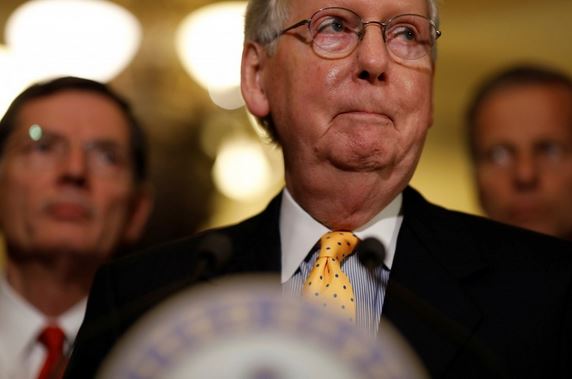Mitchell & Mitchell on Health Care and the trump Agenda, Part 11: A Pivot Point in Health Policy

This is part 11 in an ongoing series regarding changes in health care that may take place—and actual changes that do take place—with the Trump administration. The likely implementation issues to be encountered for both potential and actual changes are described, based on detailed methods of analysis. The emphasis is on what these shifts mean for legal practices and how attorneys may prepare in the most effective ways.
The Affordable Care Act (ACA) may be seen as an “in-between” health care policy, moving toward more taxpayer subsidies to broaden the range of coverage for care but not resulting in a stable design. The American Health Care Act (AHCA) passed by the U.S. House of Representatives would move from this transition point back toward reduced subsidies, while those proposing ACA expansions would increase these subsidies.
The future health policy to be adopted by the U.S. over the long term may well depend on the decisions that are made regarding these opposing viewpoints of the best present strategy for the country.
Basic disagreements exist over how much taxpayer money should be used to help operate the health care system. As proposed, the AHCA involves significant cutbacks in tax-based health care funding, which would lead to strong negative reactions by those affected through reductions in support. Opposing proposals—for more funds to be allocated to the ACA—would require additional public funding, which would lead to negative reactions by those affected by increased taxes.
At present, the ACA is unstable. Individual and employer mandates are being resisted while insurance premiums, deductibles and copayments are soaring. The options are either to cut back on mandates, funding support and coverage—and to thereby shift away from ACA objectives—or to increase funding to make ACA participation more attractive while reducing resistance to mandates and out-of-pocket expenses.
Making good health care coverage available to more and more people at a personal cost they accept is a very expensive proposition. At present, the ACA has taken a partial step in this direction but the result is inherently unstable, as a half-way measure. The political question is now whether to provide more or less money for continuing change in health care—both approaches can lead to intense reactions and conflict.
The ACA makes use of many different funding pathways, including an expanded Medicaid program for those with the lowest incomes and subsidies for those above the Medicaid cutoff level. For those not eligible for expanded Medicaid, subsidies are in place to reduce both the premiums and out-of-pocket care expenses paid by lower-income individuals and families. The premium subsidies are calculated by the Exchanges and IRS, according to tables and formulas that take income into account. At the same time, out-of-pocket expenses for those with lower incomes are further subsidized through Cost-Sharing Reduction (CSR) funds paid from taxpayer funds to lower deductibles and copayments.
As it turns out, CSR funding is now a major political issue. As a result of a lawsuit brought by the House Republicans (United States House of Representatives v. Burwell, 130 F. Supp. 3d 53 (D.D.C. 2015), a federal district court has ruled that funds were never authorized for these particular subsidies. CSR payments are being continued for now by the Trump administration because without them the ACA might collapse with no alternative in place. At the same time, a number of state attorneys general have asked the court to let them step in to argue in favor of continuing the CSR payments (Click here to read the motion by the states to intervene.) This key issue has now been wrapped into the larger Senate debate over what to do about the ACA and the AHCA.
If the CSR payments continue, ACA supporters will claim victory in their effort to move from the present in-between approach to health care toward more public funding, while ACA detractors will attack more commitments to such public funding. An intense political dynamic is taking place as part of the struggle to determine health care policy for the future, with the ACA serving as a pivot point for these debates.
This post was written by Ferd H. Mitchell and Cheryl C. Mitchell, Thomson Reuters authors and attorney partners at Mitchell Law Office in Spokane, Wash. They are active in elder law and health law practice areas and have been working together on programs and activities on behalf of the elderly and in health care for more than 25 years. During their studies, they have visited and evaluated the health care systems of Japan and several countries in Europe to learn how the needs of the elderly are assessed and met in other countries, and they have been better able to understand the U.S. health care system and related care issues from these visits. More about the lessons learned from the ACA and issues involved in health program changes may be found in the 2017 edition of the authors’ book, Legal Practice Implications of Changes in the Affordable Care Act, Medicare and Medicaid, published by Thomson Reuters. More about these methods of analysis may be found in Mitchell & Mitchell, Adaptive Administration, published by Taylor and Francis. Follow the links below to read previous installments from this series:
The views and opinions expressed in this post are those of its authors alone.